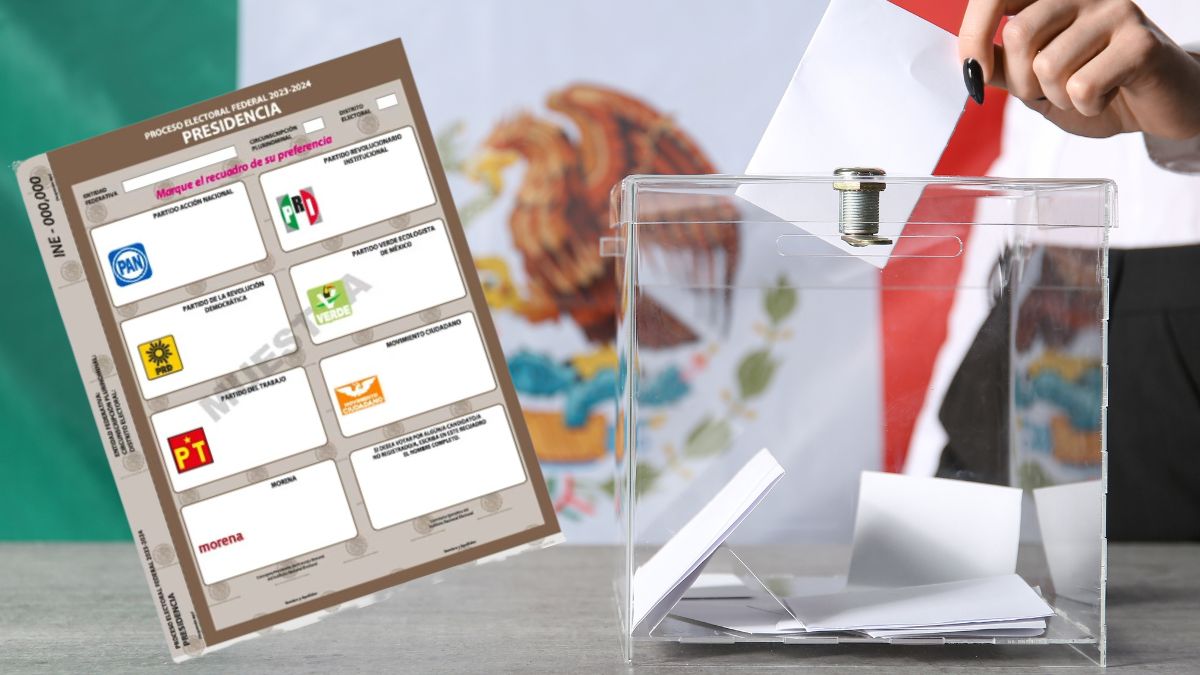
- 05/27/2024
- Elections 2024 , Today in marketing
- Juan Antonio Miranda

One week before the 2024 presidential elections, the National Electoral Institute (INE) announced the presidential ballot for June 2.playvolume
00:03/ 00:21Gary VaynerChuk, CEO of Vayner Media in exclusive interview at Merca2.0Truvid
This presidential ballot that the INE uploaded to its YouTube channel shows the logos of the political parties, but the names of Claudia Sheinbaum, Xóchitl Gálvez and Jorge Álvarez Máynez, candidates for the presidency of Mexico, do not appear.
Given this, we will show you the way in which the ballot is formed to vote for the Presidency of the Republic this June 2.
It is important that you know all the references for the elections on Sunday, June 2, where the president of Mexico, federal deputies and senators will be elected.
This is the presidential ballot for the 2024 elections on June 2
The INE explains to us the way in which the presidential ballot will be made up for the 2024 elections on June 2, the points of which are:
- On the front of the ballot you will find the heading that indicates the electoral process in progress and the type of election “Federal Electoral Process 2023-2024 PRESIDENCY”.
- Electoral data where you will see the federal entity, multi-member constituency and electoral district, to which you belong.
- The stub is where the polling station official removes the ballot from the left side and includes the page number.
- Parties and candidacies: Here you can identify the emblems and names of the political parties participating in the race and the name of the candidates they are running for.
- There is also a space provided so that if you prefer, you can vote for an unregistered candidate by writing their name.
- All ballots have the name and signature of the president of the General Council of the INE, as well as the person in charge of the office of the Executive Secretary of the institute.
- The electoral ballot is printed on security paper with a watermark from the INE and various elements that make it unfalsifiable
READ ALSO: Starbucks will give free coffees this June 2. What you should know
Important dates of the 2024 Electoral Calendar
- Campaign Period: From Friday, March 1 to Wednesday, May 29, 2024.
- Election day: Sunday, June 2, 2024.
What is elected in 2024?
During the 2024 elections, a total of 629 positions will be elected at the federal level.
This includes 128 senatorial offices, 500 federal deputies and the Presidency of the Republic.
At the local level, 19,634 positions will be elected in different states, including local councils, municipal presidencies, receiverships and councillors.
Elections will be held for governors in the states of Chiapas, Mexico City, Guanajuato, Jalisco, Morelos, Puebla, Tabasco, Veracruz and Yucatán.
What does the electoral ban consist of?
The electoral ban implies a series of restrictions for authorities at all levels of government – municipal, state and federal – who must refrain from carrying out actions such as the following:
- suspension of public events (such as the inauguration of works) and partisan events by officials,
- the delivery of economic support that could affect the voters’ decision.
Aware of these limitations, the Mexican government has taken measures, such as advancing the delivery of payments and other economic support to beneficiaries of social programs, including the Senior Adult Pension, the Benito Juárez Scholarships and Jóvenes Construyendo el Futuro, among others.
Financing of political parties
The public financing that national political parties will receive for the 2024 elections amounts to $10,444,157,311 pesos, distributed in the following items:
- Permanent ordinary activities: $6,609,787,227.
- Campaign expenses for national political parties: $3,304,893,614.
- Campaign expenses for all independent candidates: $66,097,872.
- Specific activities: $198,293,617.
- Postal franchise: $264,391,491.
- Telegraphic franchise: $693,490.





